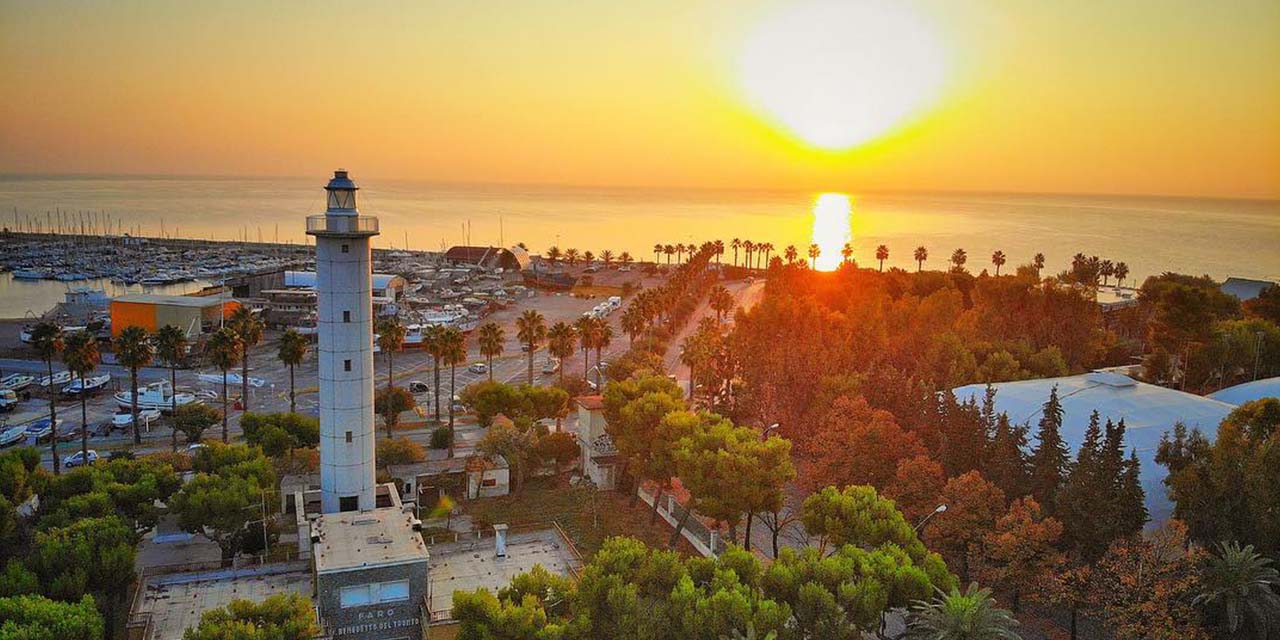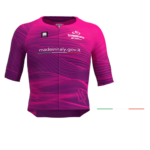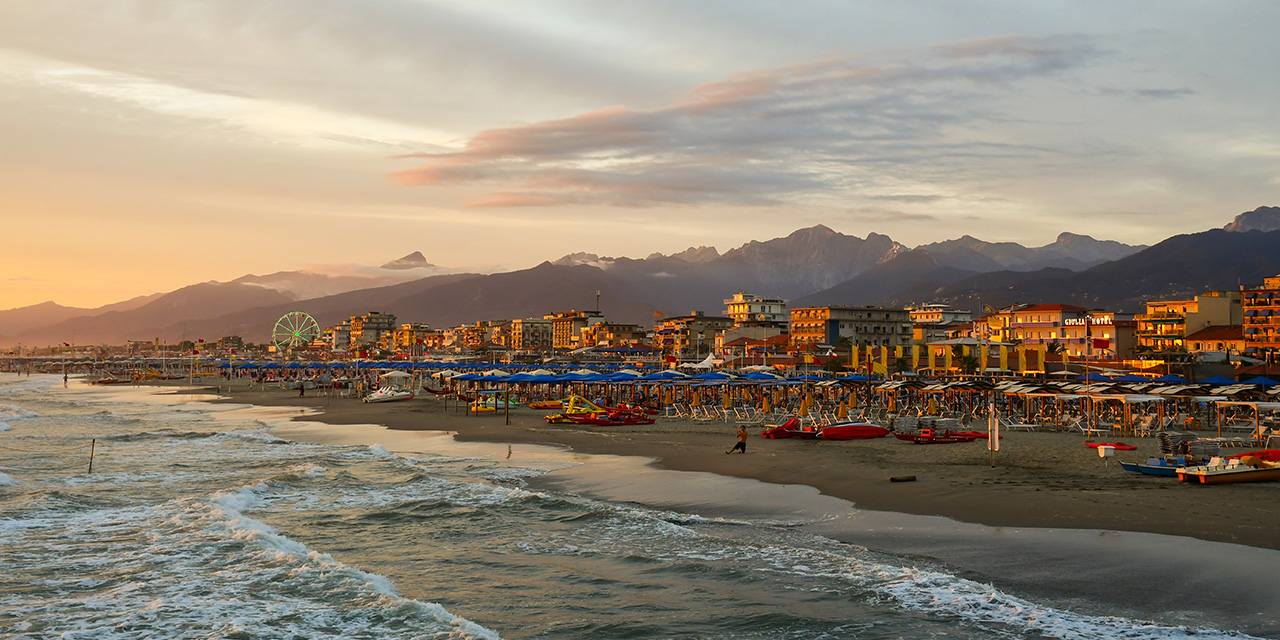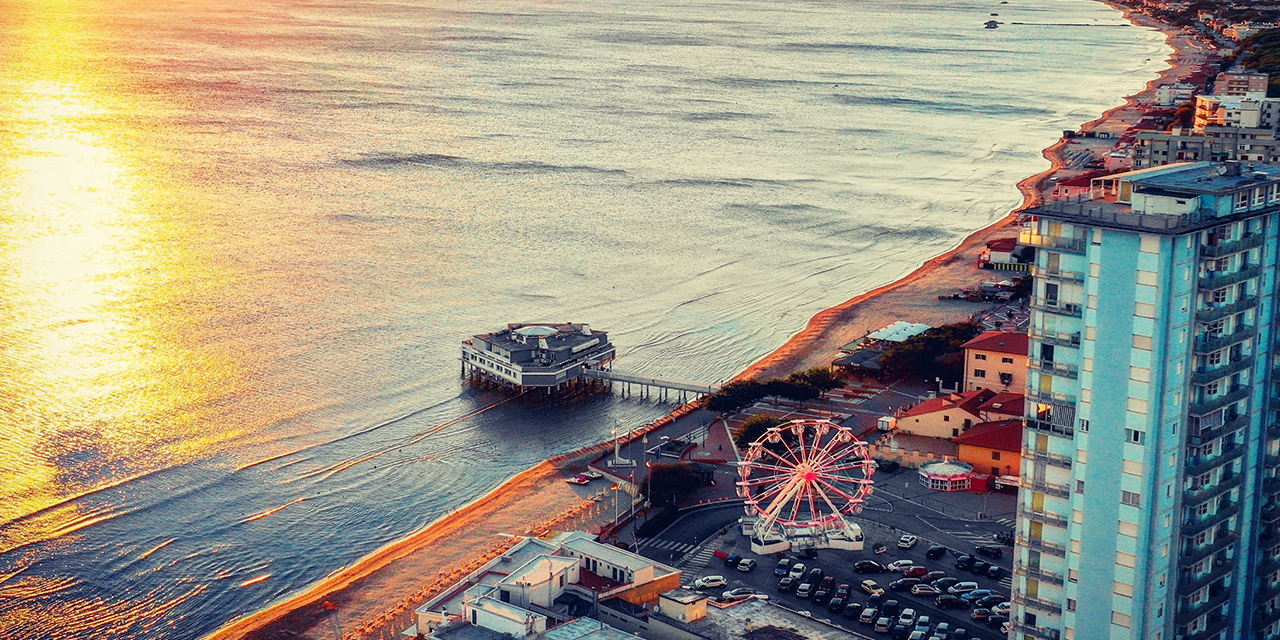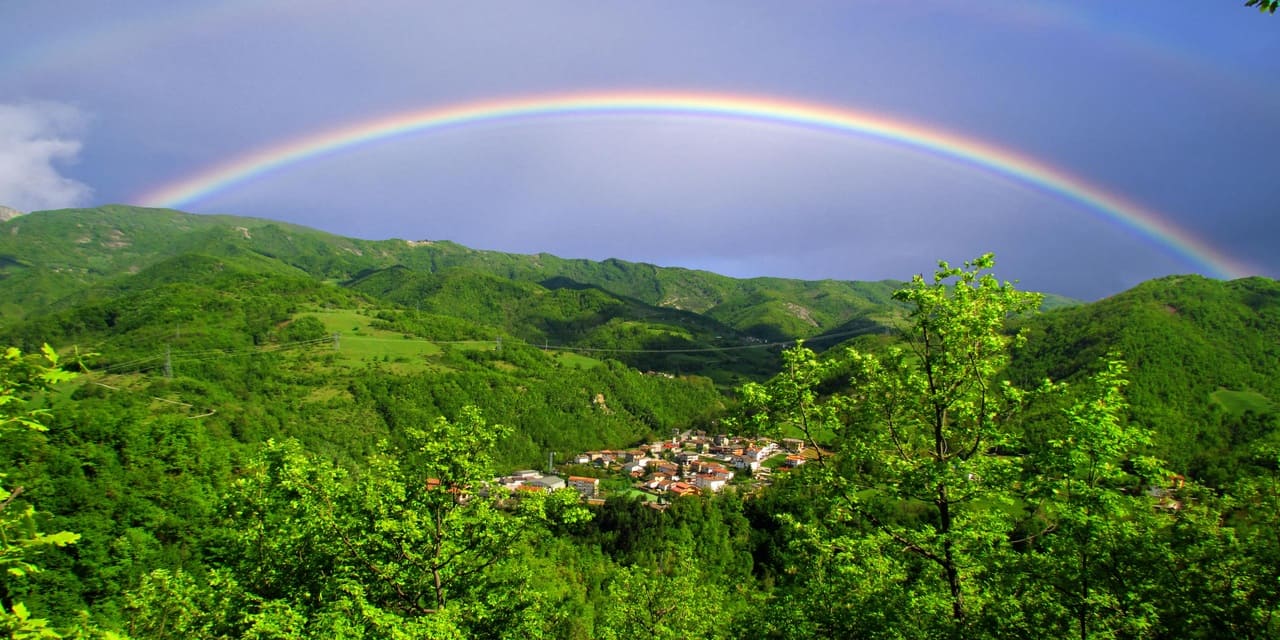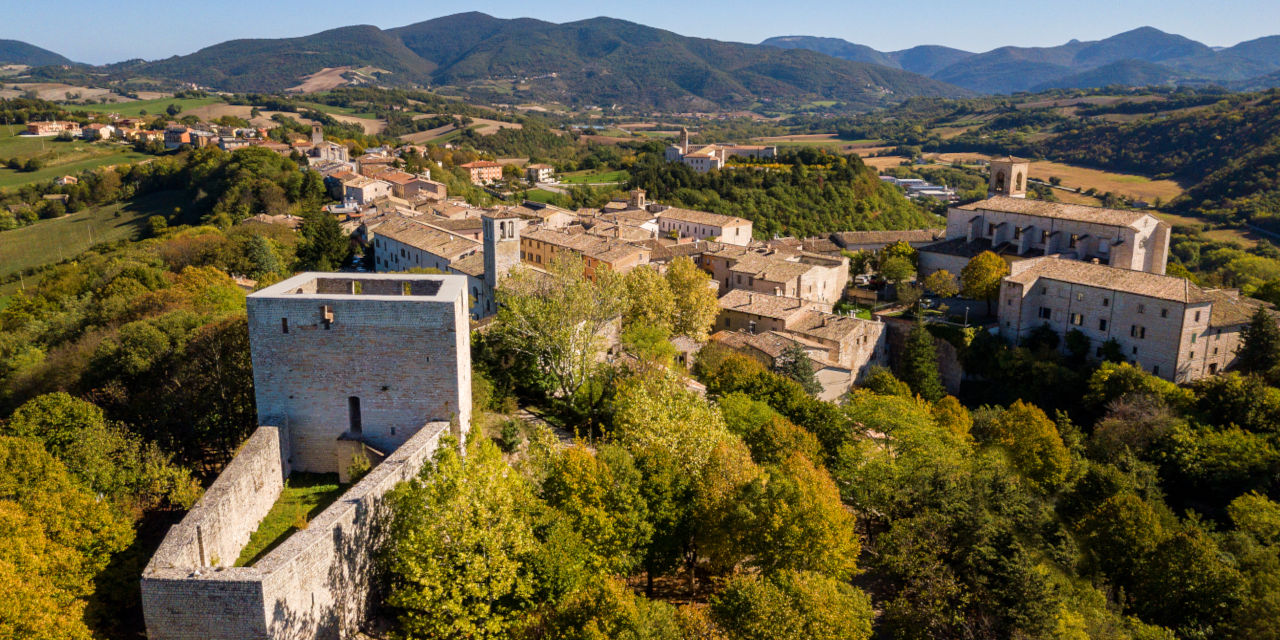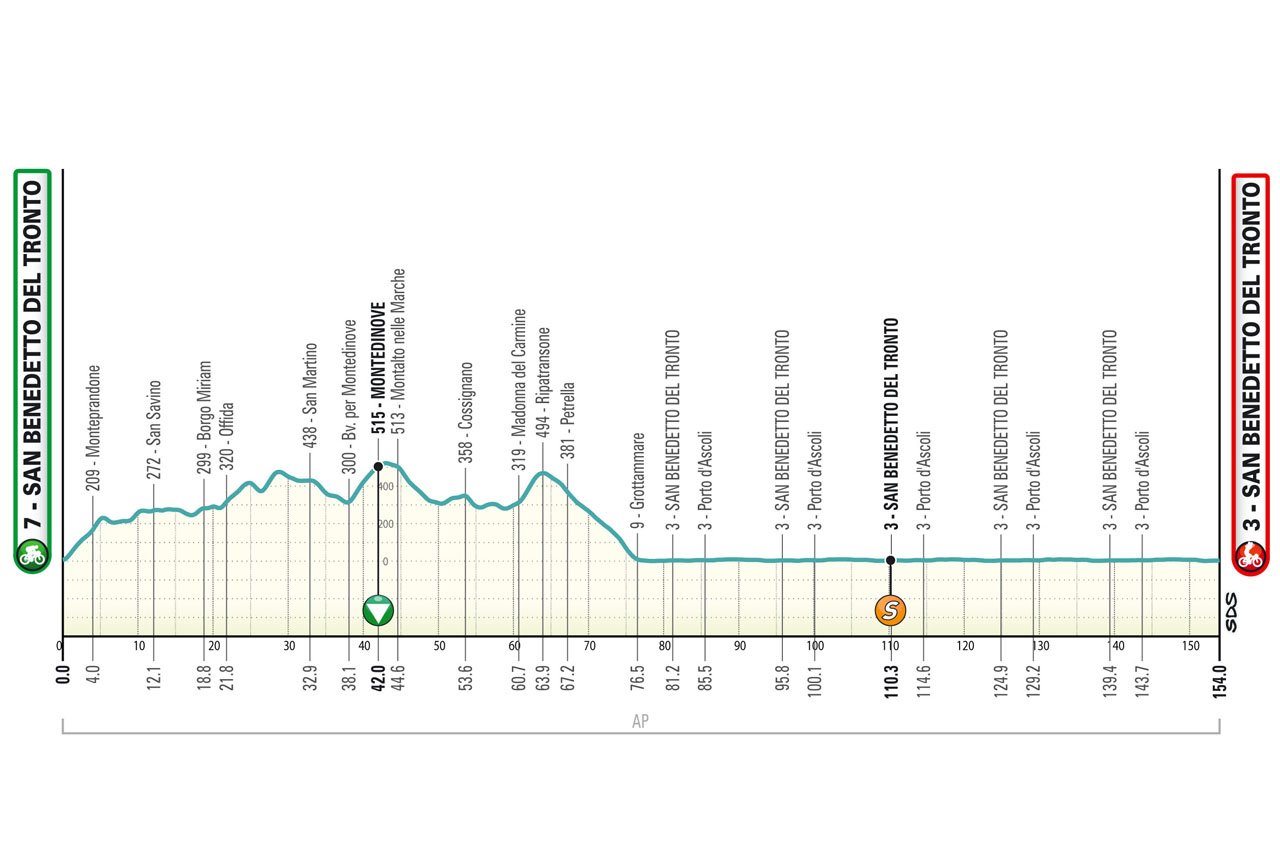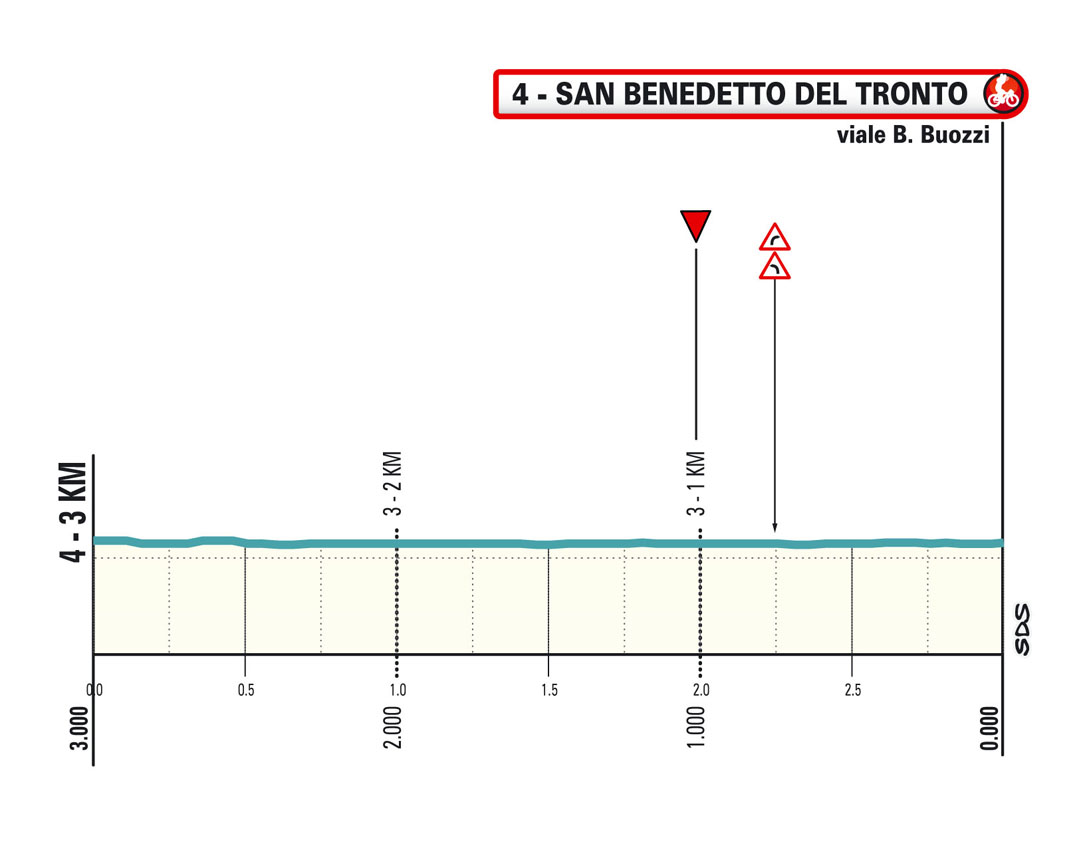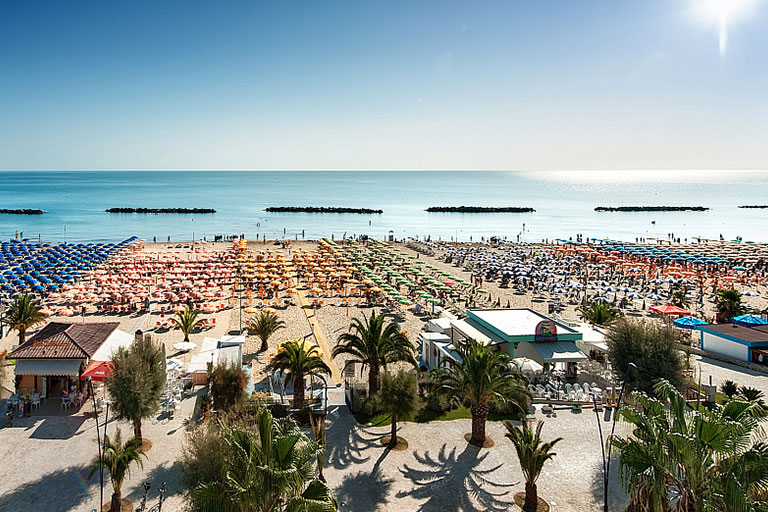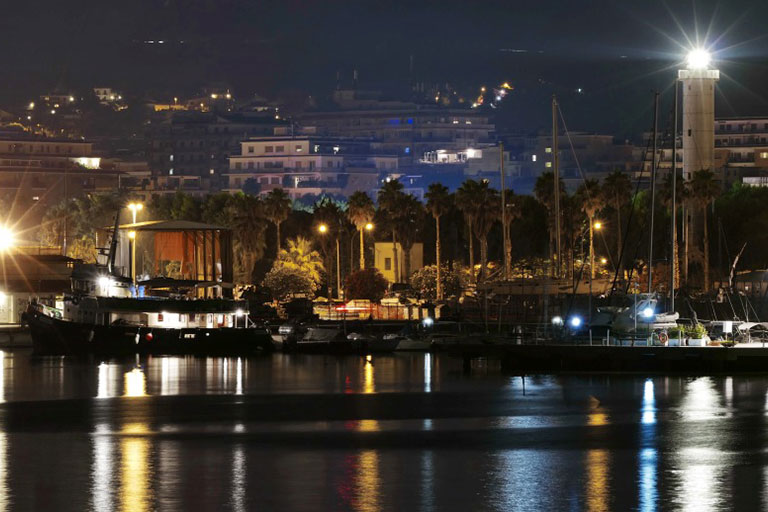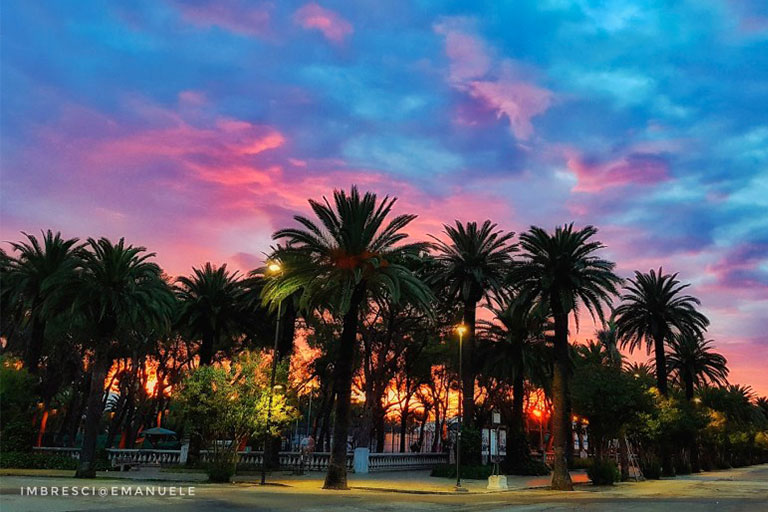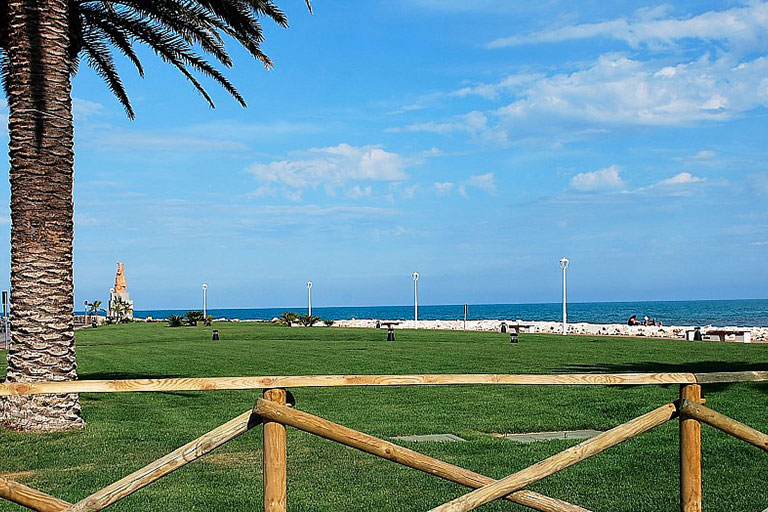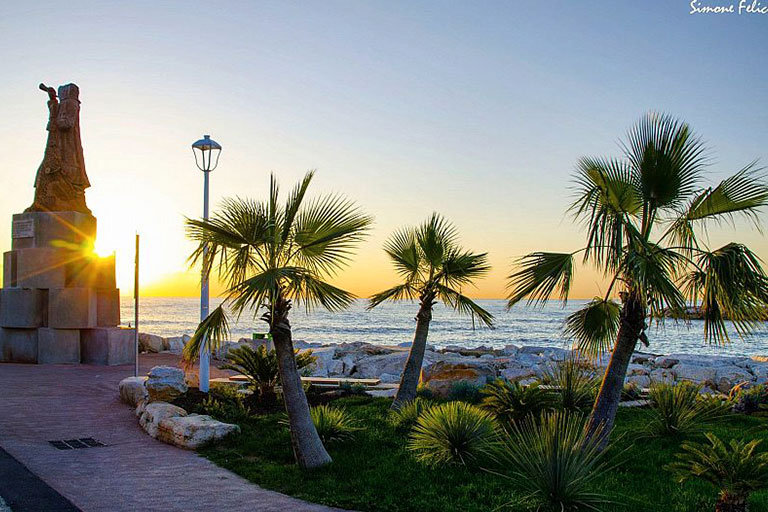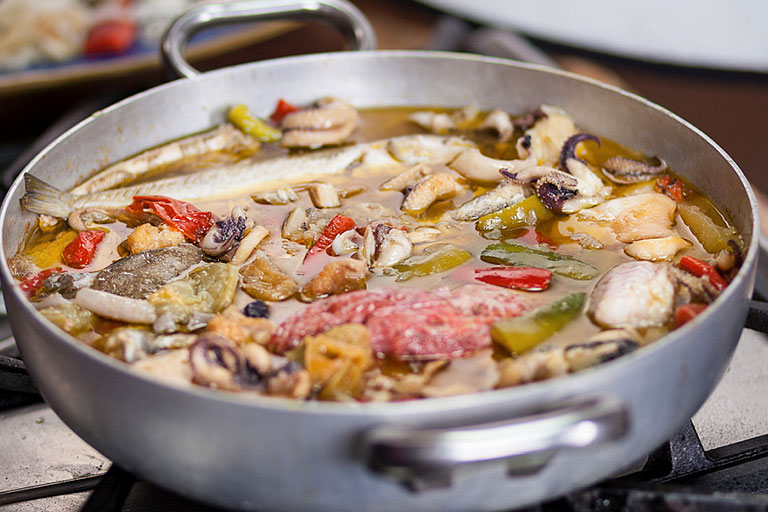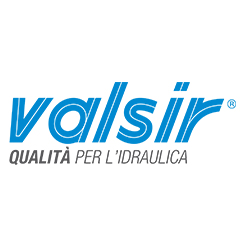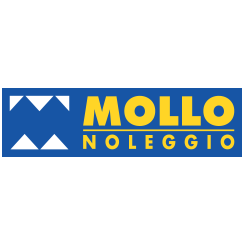profile
map
technical info
Choppy and nervous stage in the first part but entirely flat in the last 80 km. Uphill start with passage through Monteprandone followed by a tough climb to Montedinove. Next are a few ups and downs through Montalto delle Marche which will lead to the village of Ripatransone. The long descent to Grottammare is followed by a circuit of about 15 km to be repeated five times on mostly straight, wide, paved roads.
Last km
Last 3 km on wide, mostly straight roads with a few semi-curves on medium-wide roads in the first part. The last double bend is located at about 1 km from the finish.
start / finish
final kilometres
itinerary timetable
tourist info
Host city:
San Benedetto del Tronto
Overview
San Benedetto del Tronto is one of the main holiday resorts of the southern Marche and, with over seven thousand palm trees on its wide promenade, it has a touch of tropical charm. It is also called Riviera delle Palme, a term that was later extended to the neighboring resorts.
It boasts the Blue Flag label because of its wide sandy beaches, safety and other services.
The promenade is characterized by eight thousand palm trees and by numerous relaxation areas, games for children and thematic gardens: arid garden, wet garden, palm garden, rose garden, Mediterranean scrub garden.
Food
The most typical dish of San Benedetto del Tronto is the “brodetto alla sanbenedettese”, a fish soup with the addition of peppers and vinegar. Many ingredients are used to prepare it: extra virgin olive oil, brown onions, a piece of chilli pepper, cuttlefish, squid, white wine, green tomatoes, large chopped pieces of green and red pepper. Further types of fish are included, like dogfish, toad, mazzoline, scorpion fish, ray and mantis shrimp. Fish is cooked at low heat, with the pot covered for a few minutes; top quality white wine vinegar is added before serving. It is good to serve accompanied with toasted bread.
Another specialty famous worldwide is the Oliva Ascolana of Piceno D.O.P, that is quite large, with a uniform color, from green to straw yellow; it is crunchy, easy to digest and is considered as the best green table olive in the world. Some illustrious men like Plinio appreciated its quality in brine; Pope Sixtus V, Garibaldi, Rossini, Puccini also showed their appreciation for this product. Recognized as DOP (protected source status) in 2005, these typical olives are the main ingredient of the Ascolane Olives recipe: stuffed with a tasty meat-based filling and breaded before being deep fried, they are excellent as an appetizer, or as an aperitif, served both hot and cold.
Wine and beverage
There are numerous wines produced in the rich surrounding hinterland to accompany the delicacies of the Riviera. An agile and non-trivial wine, rich in fresh broom fragrances is the Passerina di Offida DOCG, which goes very well with light first courses and soups, as well as fish dishes. A wine made exclusively from grapes of the Passerina variety, indigenous to the Marche region, it has a beautiful pale straw yellow colour. The aromas are typical of tropical fruit and green apple, while the floral ones recall acacia and broom. It is a wine to be enjoyed young if possible, to appreciate all its freshness and versatility in combinations.
In shades of coriander flower, Pecorino di Offida DOCG is produced in the hills surrounding Ascoli Piceno and pairs perfectly with fish, shellfish and crustacean dishes. It is also perfect with white meats and medium-aged cheeses. It has a beautiful golden yellow colour, with slight greenish reflections and interesting balsamic notes of aromatic herbs and ripe yellow fruit and citrus fruits, which are released as soon as you approach the nose. The result is an intense and persistent taste, fresh and balancedly savoury.
Among the reds, the Rosso Piceno DOC Superiore is a must, recalling the aromas of violets. It goes perfectly with roast meats, moderately spicy dishes and, of course, with strong-tasting cheeses. It is produced in particular from Montepulciano and Sangiovese vines and is characterised by a beautiful, lively ruby red colour with light violet veins. It presents itself on the nose with interesting notes of sweet spices and red fruit, scents and aromas that are easily found in the mouth with breadth and elegance.
Points of interest
San Benedetto del Tronto has always been closely linked to the sea and the maritime tradition. The Sea Museum includes the Maritime Museum of the Marche, the Amphora Museum, the Fish Museum and the Antiquarium Truentinum. The Pinacoteca of the Sea, established in April 2009, although located in the heart of the old town, is an integral part of the museum center dedicated to the sea set up at the Fish Market. The Museum of Art on the Sea, a permanent open-air museum, which develops alongside the entire south pier and houses 145 artworks, including 135 sculptures and 10 large murals, is worth a visit.
In the old town, at the foot of which the fishing village has developed starting from the eighteenth century, you can admire the fourteenth-century hexagonal Gualtieri Tower, which marks the hours of the day through its ancient clock, the symbol of the city. The must see attractions are: the Madonna of Santissimo Sacramento Sanctuary, the Cathedral of Santa Maria of Marina, the Church of San Giuseppe, the Vescovado, the Concordia Theathre, and the Lighthouse.
The promenade is equipped with lush gardens, a pine forest, tennis courts, an ice rink and Palazzina Azzurra, an historic Palace next to Albula stream. San Benedetto del Tronto’s beaches are suitable for children beacuse of fine sand: children can actually build sand castles and digg holes, swim safely because of shallow water.
The “Giardino Zio Marcello”, just in front of the free beach, is a large green area where children can easily play. A wide cycle path runs continuously along the beach for over 15 km until Cupra Marittima. To the south, the track reaches Via del Mare in Porto d’Ascoli. The town also boasts a beautiful marina, a fishing port and a wholesale fish market, one of Italy’s most important fish markets.
North of the mouth of the Tronto river is the Sentina Nature Reserve, which is characterized not only by the migration of birds, but also by a stretch of sandy beach with an unique environment.
The most important events taking place throughout the year are: the “Antico e le Palme” exhibition-market, which attracts Italian and foreign antique dealers and collectors; the Madonna della Marina Festivity occuring the last Sunday of July, with a sea procession of fishing boats; the Libero Bizzarri Award, one of Italy’s most renowned competitions in the field of documentary cinemas; Anghiò, the International Blue Fish Festival.
San Benedetto del Tronto
Overview
San Benedetto del Tronto is one of the main holiday resorts of the southern Marche and, with over seven thousand palm trees on its wide promenade, it has a touch of tropical charm. It is also called Riviera delle Palme, a term that was later extended to the neighboring resorts.
It boasts the Blue Flag label because of its wide sandy beaches, safety and other services.
The promenade is characterized by eight thousand palm trees and by numerous relaxation areas, games for children and thematic gardens: arid garden, wet garden, palm garden, rose garden, Mediterranean scrub garden.
Food
The most typical dish of San Benedetto del Tronto is the “brodetto alla sanbenedettese”, a fish soup with the addition of peppers and vinegar. Many ingredients are used to prepare it: extra virgin olive oil, brown onions, a piece of chilli pepper, cuttlefish, squid, white wine, green tomatoes, large chopped pieces of green and red pepper. Further types of fish are included, like dogfish, toad, mazzoline, scorpion fish, ray and mantis shrimp. Fish is cooked at low heat, with the pot covered for a few minutes; top quality white wine vinegar is added before serving. It is good to serve accompanied with toasted bread.
Another specialty famous worldwide is the Oliva Ascolana of Piceno D.O.P, that is quite large, with a uniform color, from green to straw yellow; it is crunchy, easy to digest and is considered as the best green table olive in the world. Some illustrious men like Plinio appreciated its quality in brine; Pope Sixtus V, Garibaldi, Rossini, Puccini also showed their appreciation for this product. Recognized as DOP (protected source status) in 2005, these typical olives are the main ingredient of the Ascolane Olives recipe: stuffed with a tasty meat-based filling and breaded before being deep fried, they are excellent as an appetizer, or as an aperitif, served both hot and cold.
Wine and beverage
There are numerous wines produced in the rich surrounding hinterland to accompany the delicacies of the Riviera. An agile and non-trivial wine, rich in fresh broom fragrances is the Passerina di Offida DOCG, which goes very well with light first courses and soups, as well as fish dishes. A wine made exclusively from grapes of the Passerina variety, indigenous to the Marche region, it has a beautiful pale straw yellow colour. The aromas are typical of tropical fruit and green apple, while the floral ones recall acacia and broom. It is a wine to be enjoyed young if possible, to appreciate all its freshness and versatility in combinations.
In shades of coriander flower, Pecorino di Offida DOCG is produced in the hills surrounding Ascoli Piceno and pairs perfectly with fish, shellfish and crustacean dishes. It is also perfect with white meats and medium-aged cheeses. It has a beautiful golden yellow colour, with slight greenish reflections and interesting balsamic notes of aromatic herbs and ripe yellow fruit and citrus fruits, which are released as soon as you approach the nose. The result is an intense and persistent taste, fresh and balancedly savoury.
Among the reds, the Rosso Piceno DOC Superiore is a must, recalling the aromas of violets. It goes perfectly with roast meats, moderately spicy dishes and, of course, with strong-tasting cheeses. It is produced in particular from Montepulciano and Sangiovese vines and is characterised by a beautiful, lively ruby red colour with light violet veins. It presents itself on the nose with interesting notes of sweet spices and red fruit, scents and aromas that are easily found in the mouth with breadth and elegance.
Points of interest
San Benedetto del Tronto has always been closely linked to the sea and the maritime tradition. The Sea Museum includes the Maritime Museum of the Marche, the Amphora Museum, the Fish Museum and the Antiquarium Truentinum. The Pinacoteca of the Sea, established in April 2009, although located in the heart of the old town, is an integral part of the museum center dedicated to the sea set up at the Fish Market. The Museum of Art on the Sea, a permanent open-air museum, which develops alongside the entire south pier and houses 145 artworks, including 135 sculptures and 10 large murals, is worth a visit.
In the old town, at the foot of which the fishing village has developed starting from the eighteenth century, you can admire the fourteenth-century hexagonal Gualtieri Tower, which marks the hours of the day through its ancient clock, the symbol of the city. The must see attractions are: the Madonna of Santissimo Sacramento Sanctuary, the Cathedral of Santa Maria of Marina, the Church of San Giuseppe, the Vescovado, the Concordia Theathre, and the Lighthouse.
The promenade is equipped with lush gardens, a pine forest, tennis courts, an ice rink and Palazzina Azzurra, an historic Palace next to Albula stream. San Benedetto del Tronto’s beaches are suitable for children beacuse of fine sand: children can actually build sand castles and digg holes, swim safely because of shallow water.
The “Giardino Zio Marcello”, just in front of the free beach, is a large green area where children can easily play. A wide cycle path runs continuously along the beach for over 15 km until Cupra Marittima. To the south, the track reaches Via del Mare in Porto d’Ascoli. The town also boasts a beautiful marina, a fishing port and a wholesale fish market, one of Italy’s most important fish markets.
North of the mouth of the Tronto river is the Sentina Nature Reserve, which is characterized not only by the migration of birds, but also by a stretch of sandy beach with an unique environment.
The most important events taking place throughout the year are: the “Antico e le Palme” exhibition-market, which attracts Italian and foreign antique dealers and collectors; the Madonna della Marina Festivity occuring the last Sunday of July, with a sea procession of fishing boats; the Libero Bizzarri Award, one of Italy’s most renowned competitions in the field of documentary cinemas; Anghiò, the International Blue Fish Festival.


